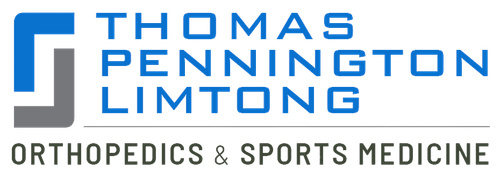 Instability and intra-articular joint pathology may commonly occur in the elbow or shoulder. The condition should be treated early to prevent long-term damage and restore normal function and relief from pain.
Instability and intra-articular joint pathology may commonly occur in the elbow or shoulder. The condition should be treated early to prevent long-term damage and restore normal function and relief from pain.
Board certified orthopedic surgeons Dr. Steven Thomas and Dr. Gregory Bigler provide treatments for the elbow and shoulder instability to patients in Las Vegas, Nevada, and surrounding locations.
Instability of the Elbow
The elbow may be injured in certain sports or other activities to the point of damage to its cartilage or ligaments. Ligament injuries to the elbow may occur due to twisting injury, a one-time strain, or from repetitive motions that cause cumulative injury. Instability can then lead to painful and abnormal function of the elbow.
Injuries to the elbow may also result in loose cartilage or combining of the cartilage and bone pieces that make the joint motion painful or unstable. Treatment will begin with establishing of a correct diagnosis and determining the cause of the condition. This will involve a physical exam, x-ray and MRIs, and in a few cases, an arthroscopic exam.
Once the correct diagnosis is affirmed, the treatment provider will recommend a customized treatment plan depending on the severity of the condition. This may range from something as simple as balancing and muscle strengthening exercises to invasive procedures such as surgical ligament repair or arthroscopic debridement, or both.
Instability of the Shoulder
Shoulder instability may occur when the head of the upper arm bone is forced out of the shoulder socket. Overuse or a sudden injury may lead to this occurrence. Once the shoulder dislocation has occurred, it will become vulnerable to repeat episodes. If the shoulder becomes loose and repeatedly slips out of place, it is known as chronic shoulder instability.
Shoulder Dislocation
Trauma or severe injury is usually the cause of an initial shoulder dislocation. Once the head of the humerus is dislocated, the socket bone and the ligaments in the front of the shoulder are often damaged. The cartilage rim around the edge of the glenoid may also tear. A severe first dislocation may lead to repeated dislocations, giving a feeling of instability.
Repetitive Strain
In some cases, the shoulder instability may never result in a dislocation. Such patients will have loose ligaments in their shoulders. This increased looseness is sometimes a part of their normal anatomy, but in some cases, it results from repetitive overhead motion. Certain sports activities require repetitive overhead motion, which can stretch out the shoulder ligaments. Some jobs may also involve repetitive overhead work.
Loose ligaments can make it difficult to maintain shoulder stability. A weakened shoulder is challenged due to repetitive or stressful activities, resulting in an unstable, painful shoulder. Board certified orthopedic surgeons Dr. Thomas and Dr. Bigler receive patients from Las Vegas, Nevada, and nearby areas for elbow and shoulder instability treatments.
Multidirectional Instability
In exceptional cases, the shoulder may become unstable without a history of repetitive strain or injury. These patients have naturally loose ligaments throughout the body and may be “double jointed.”
If you would like to schedule an appointment or learn more about the Knee and Shoulder Institute procedures & treatments performed by Las Vegas, Nevada board certified surgeons Steven C. Thomas, MD and Gregory T. Bigler, MD. call (702) 933-9393; Physical Therapy (702) 933-9394
